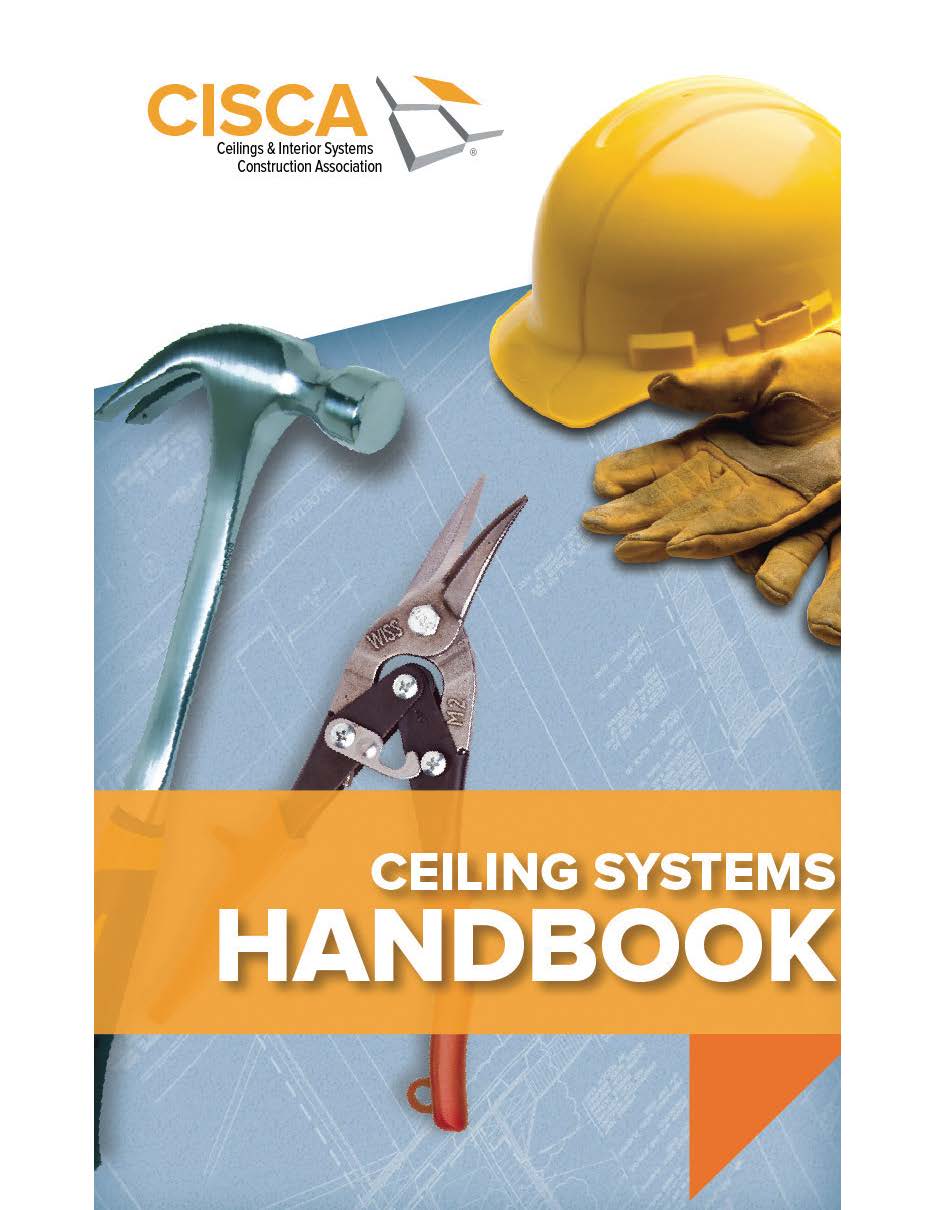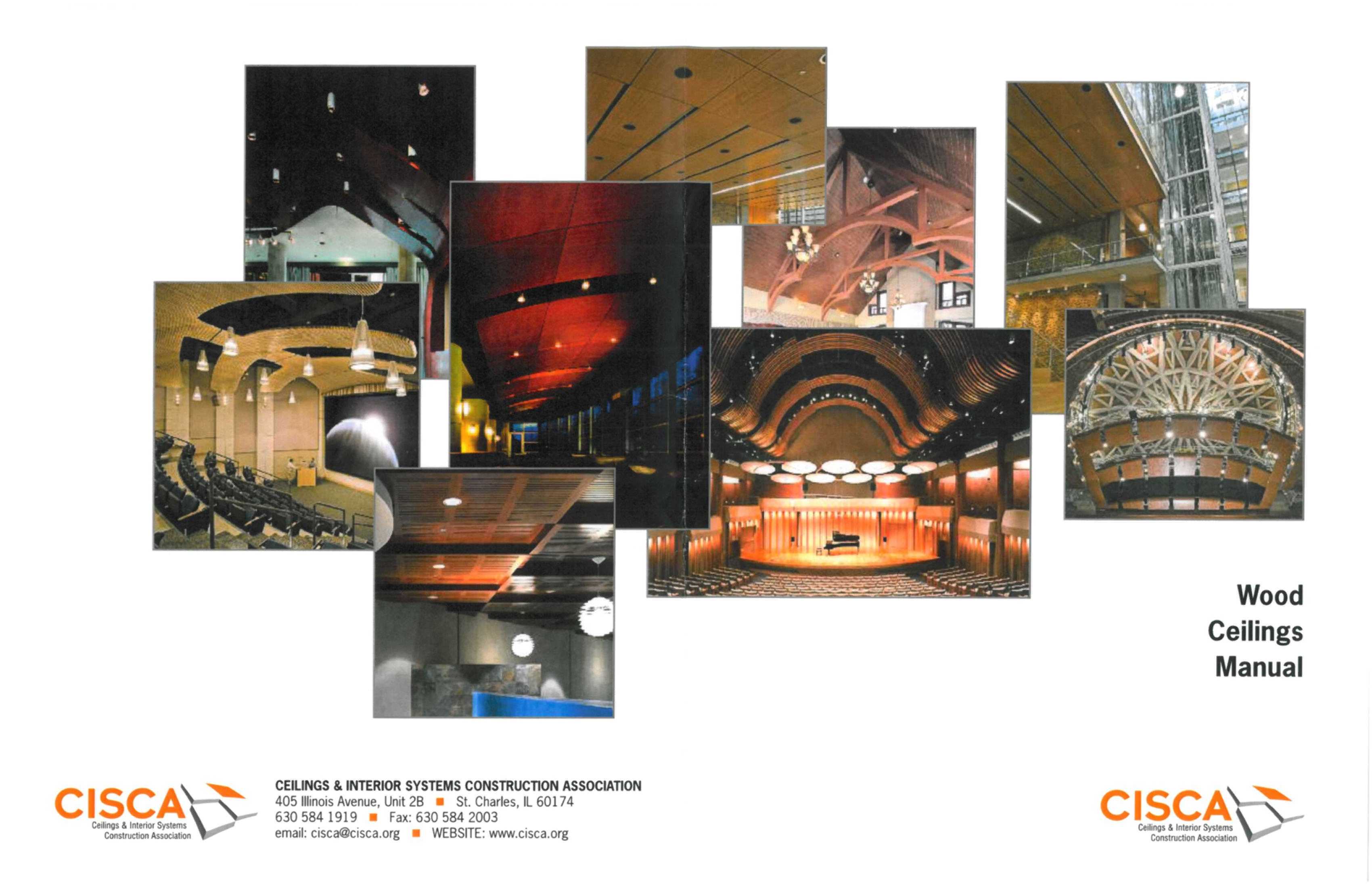Industry Update on Suspended Ceiling Hangers

Powder-actuated ceiling hangers in concrete over metal deck
There are many types of ceiling hangers used on today’s construction projects, including powder-actuated fastening systems, post-installed concrete anchors and eye lag screws. Other hanger types may consist of wires alone without pre-mounted fasteners, anchors or ceiling clips. Hanger wires are used to suspend the acoustical ceilings from the existing structure and may be wrapped into pigtails for casting in concrete floor/ceiling assemblies, wrapped around steel beams and joists above the suspended ceiling or hung from hanger tabs in steel deck composite slabs.

Powder-actuated ceiling wire hangers and concrete anchors
Powder-Actuated Fastening Systems
Powder-actuated fastening systems and post-installed concrete anchors offer the installer and designer the benefits of speed of installation and reliability of performance. Powder-actuated fastening systems have been used in general building construction and industrial applications for more than 50 years. These types of driven fasteners consist of hardened steel nails which are pre-fitted into sheet steel ceiling clips or other combination elements to which ceiling hanger wires or threaded rods can be attached. Powder-actuated fastening technology is supported by decades of research and development by leading manufacturers and researchers and backed up by a very successful construction practice track record on thousands of projects worldwide.Most powder-actuated tools use powder cartridges to drive a captive piston within the tool housing. The captive piston drives the fastener into the base material under a low velocity, controlled process. Fastenings can be made in normal weight concrete, lightweight concrete, lightweight concrete over profiled metal deck, steel, masonry and other base materials. OSHA requires operators of powder-actuated tools to be trained on the safe and proper use of each model tool, and most manufacturers offer this training service for free at the project site.

Fasteners that are driven deeper typically have a higher resistance to pullout. This has to be balanced with what’s achievable for a particular powder-actuated tool system but fastener driving failures can also occur in higher strength concretes when attempting to drive the fastener too deep. So, there’s an optimal depth of penetration for a given concrete fastening application. Overhead fastenings are usually associated with a slightly higher rate of fastener driving failures (no-holds) than in downward floor fastenings. This is due to the distribution of aggregates in the concrete, where larger aggregates tend to accumulate at the bottom of the floor-ceiling slab. Manufacturer’s recommendations should always be followed for the type of tool and cartridge settings for powder-actuated fastenings. This is particularly important with ceiling hanger fastening applications.

Powder-actuated fasteners are generally considered suitable for vertical hanger wire attachments of acoustical or lay-in panel ceiling systems, as long as the allowable load levels are not exceeded, and sufficient redundancy in the number of fastening points is provided. Powder-actuated fastenings should never be designed based on single hangers or fastener installations and multiple fasteners are always recommended. According to ASTM C636, “Standard Practice for Installation of Metal Ceiling Suspension Systems for Acoustical Tile and Lay-In Panels,” ceiling hanger wires are spaced at 4 feet, 0 inches on center, although different fastening patterns and densities of fasteners may be required depending on the suspended ceiling loads.

Powder Vs. Gas
Another type of power-actuated fastening system uses a gas canister or propellant to drive the tool piston instead of powder cartridges. Due to the present technology however, most gas-actuated fastening systems do not provide the necessary driving energy (or power control) for setting fasteners deep enough and consistently enough in the harder concrete base materials seen on today’s projects. This driving energy threshold is approximately 90 to 100 joules. Providing less driving energy than this makes it much more difficult to achieve sufficient fastener embedment depth and required load resistance.Gas-actuated fastening systems are generally less versatile than powder-actuated fastening systems, and in harder base materials can be more difficult to achieve consistent driving power and embedment necessary for load development, but they do have their applications. Gas-actuated tools do not provide as wide a range of power adjustability as powder-actuated tools and cartridges do. Thus, it may not be possible to achieve optimum power adjustment if previous fastenings were improperly set or too shallow in embedment. In short, while gas-actuated systems do have many serial applications for which they are intended, such as cold-formed steel wall track fastenings and light duty mechanical and electrical component fastenings, powder-actuated fastening systems are typically best suited for ceiling hangers.

Research laboratory testing of powder-actuated ceiling hangers
Concrete Anchors
Other types of ceiling hanger systems may include post-installed drilled in anchors. These are most commonly expansion anchors, which must be set in pre-drilled holes at the anchorage location on the concrete surface above the suspended ceiling system. Frequently, post-installed anchors are used in conjunction with powder-actuated fasteners for suspended ceiling hangers in seismic regions, with powder-actuated fastenings being used for the vertical hanger wires and post-installed anchors being used for seismic bracing and compression strut anchorage. Post-installed mechanical anchors are currently evaluated according to ICC-ES AC193 Acceptance Criteria for Mechanical Anchors in Concrete Elements, which includes both static and seismic tests in cracked and uncracked concrete. ICC Evaluation Report ESR-1917 provides performance data and design guidance on Hilti concrete expansion anchors.Powder-actuated fastening systems and post-installed anchor systems for ceiling hangers can also be installed in relatively shallow composite floor/ceiling assemblies consisting of concrete over profiled metal deck. Installations are qualified by testing in both upper and lower flute locations.

Industry Standard Updates and System Redundancy
Recent revisions to the American Society of Civil Engineers “7 Minimum Design Loads for Buildings” include changes to Chapter 13 Seismic Design Requirements for Non-Structural Components. An exception has been added to Section 13.4.5, removing some ambiguity that existed regarding the use of powder-actuated fasteners in acoustical tile or lay-in panel suspended ceilings and other distributed systems. In the 2010 edition, ASCE 7 considers these types of fasteners as acceptable for use in seismic design categories, up to certain pre-defined service load limits (individual fastener loads of 90 pounds in concrete and 250 pounds in steel), when used as part of distributed fastening systems that have sufficient redundancy. Sufficient redundancy of attachments must be ensured by the designer in order to prevent collapse or overloading of the ceiling grid if some hangers fail prematurely due to improper setting or other factors.
Performance relationship for powder-actuated fastenings in concrete
Hanger Technologies and Research
New technologies include the development of alternative ceiling hanger types that eliminate the need for sheet steel ceiling clips, as well as wire ties, which may vary with respect to consistency when tied on the project site. Alternative ceiling hangers with steel clamping washer designs have been recently qualified according to ICC-ES AC70 and AC368 Acceptance Criteria for Suspended Ceiling Framing Systems and these hanger types have been proven to have less deflection than traditional ceiling clips with tied wires. The ceiling hanger washer provides sufficient clamping force to yield/fracture a standard No. 12 gauge (2.05 millimeters) galvanized, soft annealed, mild steel wire (ASTM A641). These technology improvements lend themselves directly to improved ceiling hanger installation, reliability and productivity on the project site. ICC Evaluation Report ESR-2892 provides more information on this type of IBC and IRC code recognized Hilti ceiling hanger. With respect to ceiling wires, it should also be noted that according to the Division of the State Architect, Interpretation of Regulations Document IR 25-5, Metal Suspension Systems for Lay-In Panel Ceilings, No. 12 gauge ceiling wires shall be ASTM A641 type, soft annealed, galvanized steel wire with a Class 1 zinc coating. This is a particularly important point, as not all manufacturers currently supply this.
Along with the extensive research being done by ceiling manufacturers, parallel research into the performance of redundantly fastened systems is underway at the Hilti Fastening Systems Research Laboratory in Schaan, Liechtenstein. This research will lead to a better understanding of load transfer, improved guidance for designers in ceiling hanger systems and the development of improved fastening systems for ceiling hanger applications. Stay tuned for more information.
Looking for a reprint of this article?
From high-res PDFs to custom plaques, order your copy today!







